How to make the best homemade body butter with 2 simple, natural ingredients. This DIY whipped body butter feels luxurious and delivers maximum moisture to the skin. Let me show you how to make non-greasy body butter that works for any skin type.
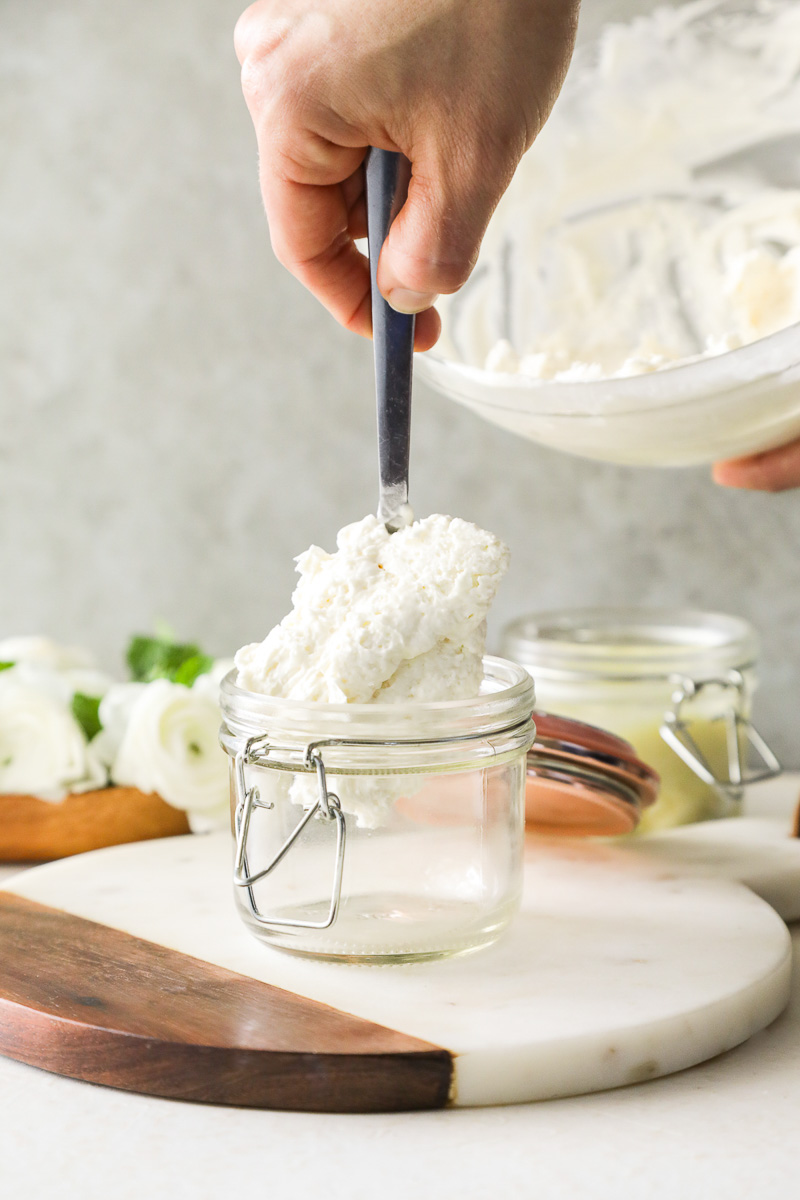
Want to Save This Article?
Enter your email & I’ll send it straight to your inbox. And you’ll get new recipes & tips each week.
Body butters are no strangers to Live Simply. First, we made this ultra-moisturizing shea butter lotion. Then we made a simple lip balm and shea butter cream facial moisturizer.
Today, we’re making silky smooth body butter for the whole body: face, arms, legs, wherever you need moisture.
In this post, I’ll guide you through making homemade body butter via photos and a video.
Key Takeaways
- Simple Ingredients – You’ll need skincare butter (shea butter, mango butter, or cocoa butter), carrier oil, and two optional ingredients- arrowroot starch/flour (to reduce the greasy feel) and essential oil.
- Easy to Make – Melt the ingredients, chill in the fridge, then use a fork or hand mixer to whip. That’s it!
- Inexpensive – Body butter can cost a fortune if you buy it at the store, particularly from a natural company. Making body products, like body butter, is usually cheaper. Buying the ingredients is an extra cost, but once you have them, you can create multiple jars of your whipped body butter (and other products).
- Non-Toxic and Natural – No synthetic fragrances, preservatives, or other unwanted ingredients. Just nourishing ingredients that are good for your skin.
- Shelf Life – 6 months
What is Body Butter?
- Moisturizing – Body butter is a rich, moisturizing skincare product made with skincare butter like shea butter and cocoa butter.
- Lotion Alternative – Body butter can be used as an alternative to lotion since its primary job is to moisturize the skin.
- Full Body Use – It may be used on the entire body, from the face to the feet.
Lotion vs. Body Butter: What’s the Difference?
- Lotion is made with water and oil (and possibly butters) so it’s light, airy, and silky smooth. Homemade lotion needs to be used within a short time or a preservative should be used (due to the water and bacterial growth). It also requires an emulsifier to properly blend the oil and water.
- Body butter is made exclusively with butter(s) and oil(s), so it’s thick and dense. Homemade body butter will last for up to 6 months without a preservative.
Both body butter and lotion are used in the same way: to moisturize the skin. Body butter does deliver more moisture since it’s not cut with water. So it’s ideal for all skin types, particularly dry skin or during the winter months.
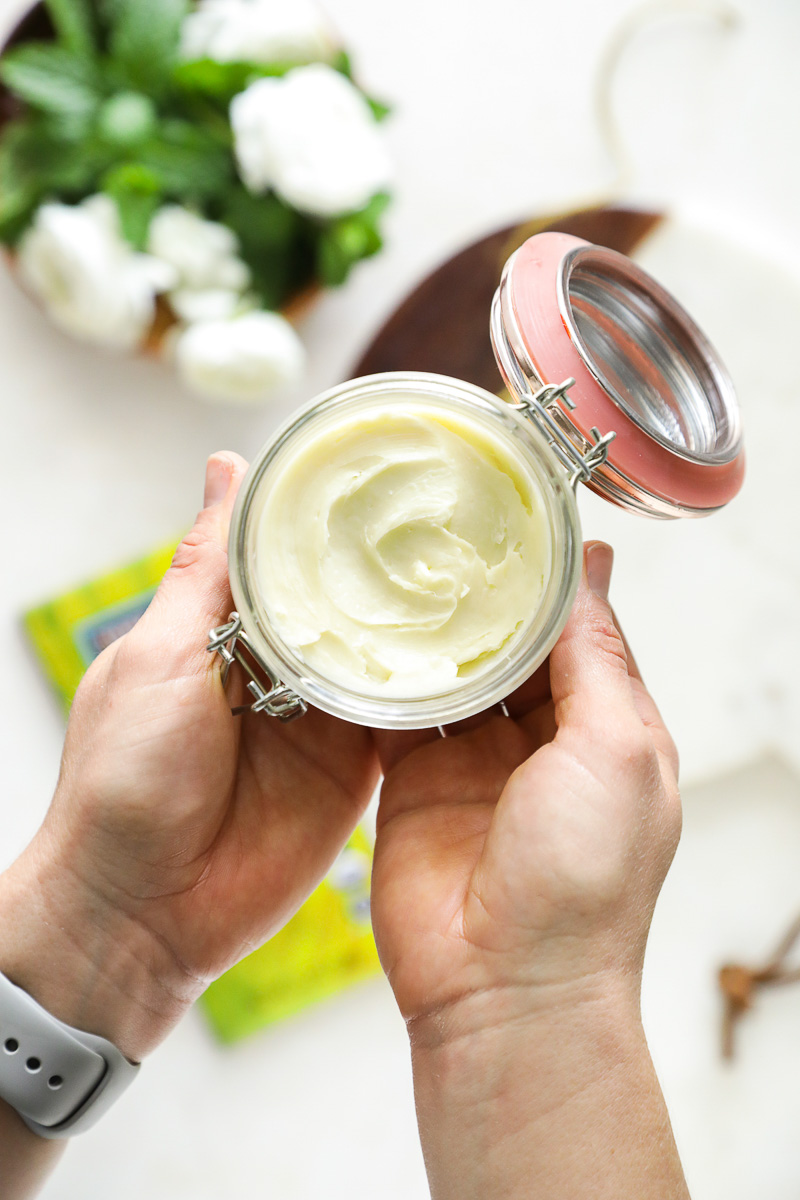
Before You Get Started: Ingredients & Equipment
DIY body butter is easy to customize to your liking. You’ll need just 2 natural ingredients.
From there, you’re welcome to add 2 additional ingredients, if desired, to make a non-greasy product or add a custom scent.
- 1/2 cup skincare butter – provides much of the moisturizing relief. Choose one of these options for the body butter: cocoa butter (hydrating and rich in vitamin E, chocolatey scent), shea butter (rich in fatty acids, vitamin E, ultra-moisturizing), or mango butter (rich in fatty acids, ultra-moisturizing).
- 1/4 cup carrier oil – nourishes and moisturizes the skin. My favorite oil options are sweet almond, olive, sunflower, avocado, jojoba, grapeseed, and coconut oil.
- 1 1/2 teaspoons arrowroot flour starch (optional) – a natural starch that helps to reduce the oily/greasy feel by absorbing.
- 36 drops favorite essential oils (optional) – add an essential oil of choice for the amazing scent.
The ingredients may be found online, some craft stores, or health food stores.
Equipment
- small saucepan – used to create a double boiler by adding water to the saucepan and placing a heat-safe bowl on top. This method protects the fragile ingredients from burning.
- glass or metal bowl (large enough to fit on top of the saucepan) – to melt the ingredients, used with the saucepan to create a double boiler.
- fork or hand-mixer – use to whip the ingredients into a spreadable butter.
- fridge – to cool the ingredients once melted.
- glass storage jar – for storing the final product.
Learn More About Each Ingredient
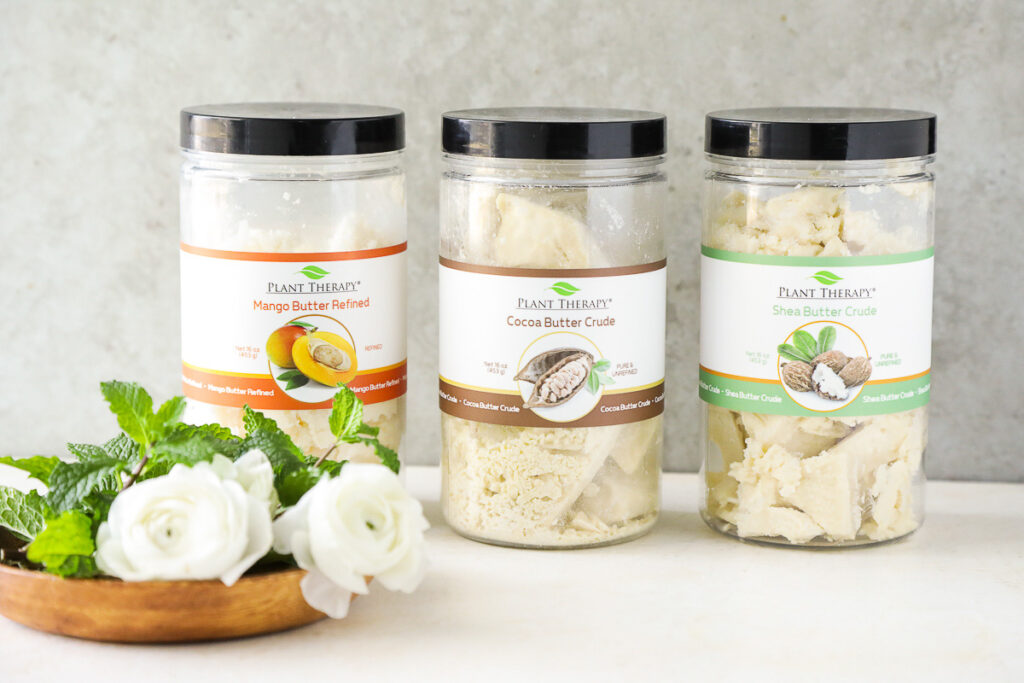
1. Butter
Homemade body butter starts with a moisturizing skincare butter. Shea butter is the perfect base butter since it’s soft, easy to work with, and melts into your skin. My recipe calls for at least a 1/4 cup of shea butter.
From there, it’s up to you, the maker, to customize the body butter. You’ll need a total of 1/2 cup of butter. So use all shea butter (for a total of 1/2 cup shea butter), or mix the shea with a different butter: 1/4 cup of cocoa butter or 1/4 cup of mango butter.
Best Butters
- Shea Butter: Shea butter comes from the “nut” (or pit) of the fruit found on the Karite Tree. It has a strong scent when it’s purchased in an unrefined state. I use unrefined shea butter in recipes (including body butter). If you don’t care for the strong scent, use refined shea butter instead. Since shea butter is naturally soft, it makes a wonderfully soft whipped body butter. It may be used on its own with a carrier oil, or combined with another butter like cocoa butter or mango butter. See all the ways you can use shea butter to make your own body products.
- Cocoa Butter: Cocoa butter comes from cocoa beans, so it has a strong scent and smells like chocolate. Cocoa butter is hard at room temperature, and it melts easily. Cocoa butter is naturally hard and dense, so if you use it, mix it with shea butter or mango butter to make a softer body butter. See other ways to use cocoa butter to make your own body products.
- Mango Butter: Mango butter comes from the seed of mango fruit. It’s naturally soft, similar to shea butter, and can have a gritty texture before melting. It yields a soft, airy body butter when mixed with shea butter. If you don’t want to use shea butter (due to allergies) in my recipe, then mango butter is the best replacement.
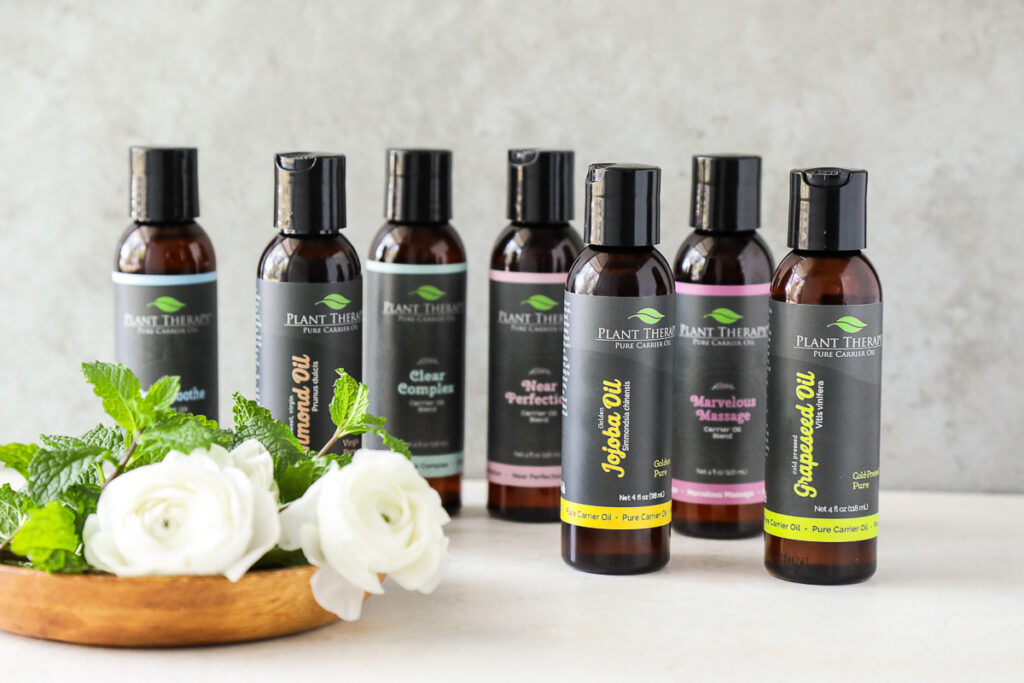
2. Carrier Oil
A liquid oil is the second main ingredient used to make body butter. The oils used in skincare recipes are known as carrier oils, although I usually call them nourishing oils. The oil used is entirely up to you.
See all the ways to use carrier oils to make your own body products.
Best Carrier Oils
- Sweet almond oil, jojoba oil, or grapeseed oil are best for making a non-greasy body butter that is easily absorbed by the skin. Great for all skin types.
- Virgin coconut oil may be used, but it can be very greasy and clog pores. Avoid if you have body acne or sensitive skin.
- Olive oil is another option; however, olive oil can be extremely heavy and feel greasy. Just like with coconut oil, this is not an option for all skin types and you may not love the results.
3. (Optional) Arrowroot Powder
Whipped body butter recipes can be very greasy!
The good news is that there’s a simple solution for this issue: add arrowroot flour/starch. Arrowroot is a natural starch (used in cooking to thicken soups, sauces, and stir-fry) that will absorb the greasy feel of the butters and oils, without drying out your skin.
Substitution: Some folks use tapioca starch and cornstarch (which are similar to arrowroot starch); however, I haven’t used these ingredients so I can’t speak to their success.
4. (Optional) Essential Oils of Your Choice
An essential oil may be added for scent and additional skincare benefits. Use just one essential oil, mix a few essential oils to create different scents, or an essential oil blend (a pre-blended bottle of essential oils). Currently, my favorite essential oils for body butter are lavender, geranium, and frankincense (carteri).
I use a 1% dilution in my body butter recipe. Before using any essential oil, read the back of the bottle for specific dilution recommendations.
Recipe Tutorial Video
How to Make Whipped Body Butter: Step By Step Guide
- Step 1: Melt the Butter in a Double Boiler. Partially fill a saucepan with water (about 1/4 of the way full). Then, place a glass (or metal) bowl on the saucepan. Place the butter(s) in the glass bowl. Turn the stovetop to medium heat, placing the double boiler on top of the heat. Allow the butter(s) to melt (about 3-5 minutes) fully.
- Step 2 Combine Oil & Carrier Oil – If you plan to use arrowroot flour, whisk the flour into the carrier oil in a small bowl. Set the mixture aside. If you’re not using arrowroot flour, skip this step.
- Step 3 Combine the Melted Butter & Oil – Carefully remove the bowl (with the melted butter inside) from the double boiler setup. Add the oil (with the arrowroot flour, if using) to the melted butter, and use a spoon to stir and combine the ingredients.
- Step 4 Chill – At this point, the oil mixture should be cooler (along with the glass bowl). If not, allow it to rest for a few minutes. Then, place the mixture in the fridge and allow it to solidify (about 30 minutes to 1 hour).
- Step 5 Add Essential Oil – Once the mixture is opaque and a bit firm (not solid as a rock), remove the bowl from the fridge. Add the essential oil of choice if desired. The essential oils must be added when the mixture is cool, as heat will cause the fragile essential oils to evaporate.
- Step 6 Whip – If you used cocoa butter, whisk the mixture with a fork until it appears “whipped.” If you used shea and/or mango butter, you can use the same technique with a fork or a hand mixer to “whip” the body butter. Just be careful not to over-whip the mixture.
- Step 7 Spoon Into a Jar – Scoop the mixture into a jar and place the lid on the jar. Now it’s ready to use!
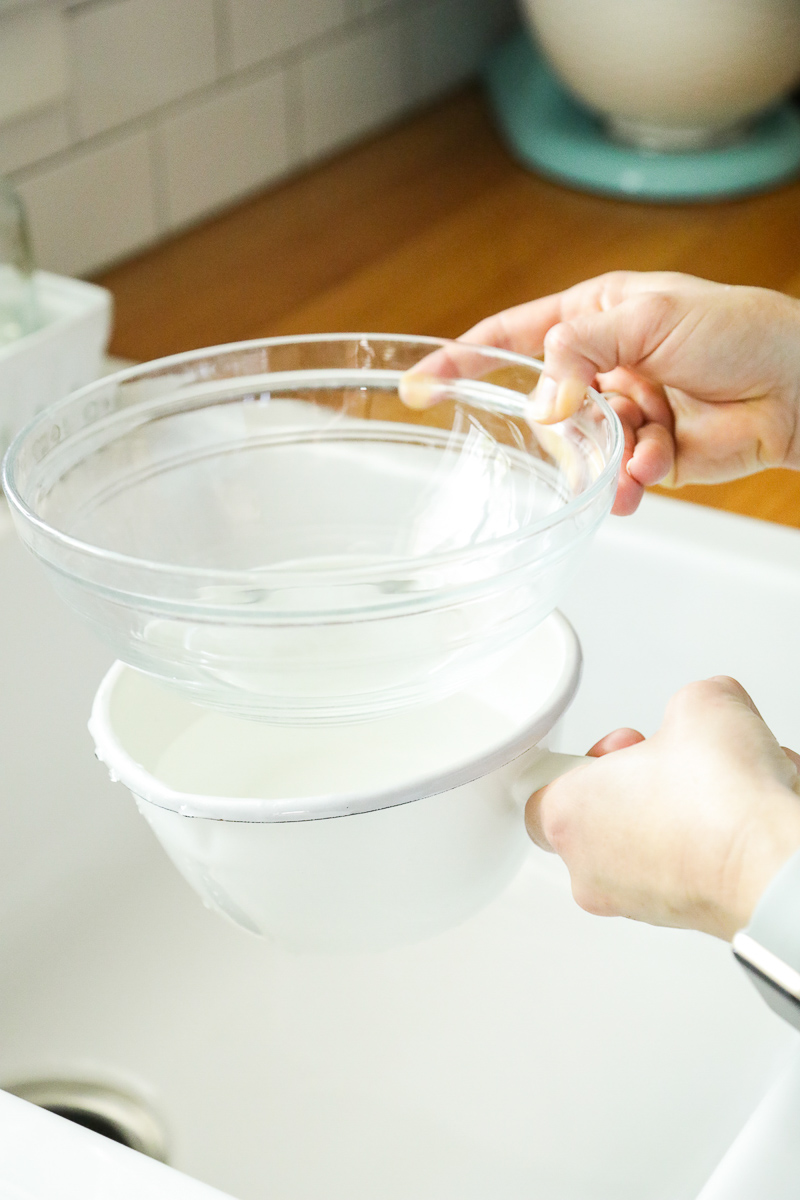

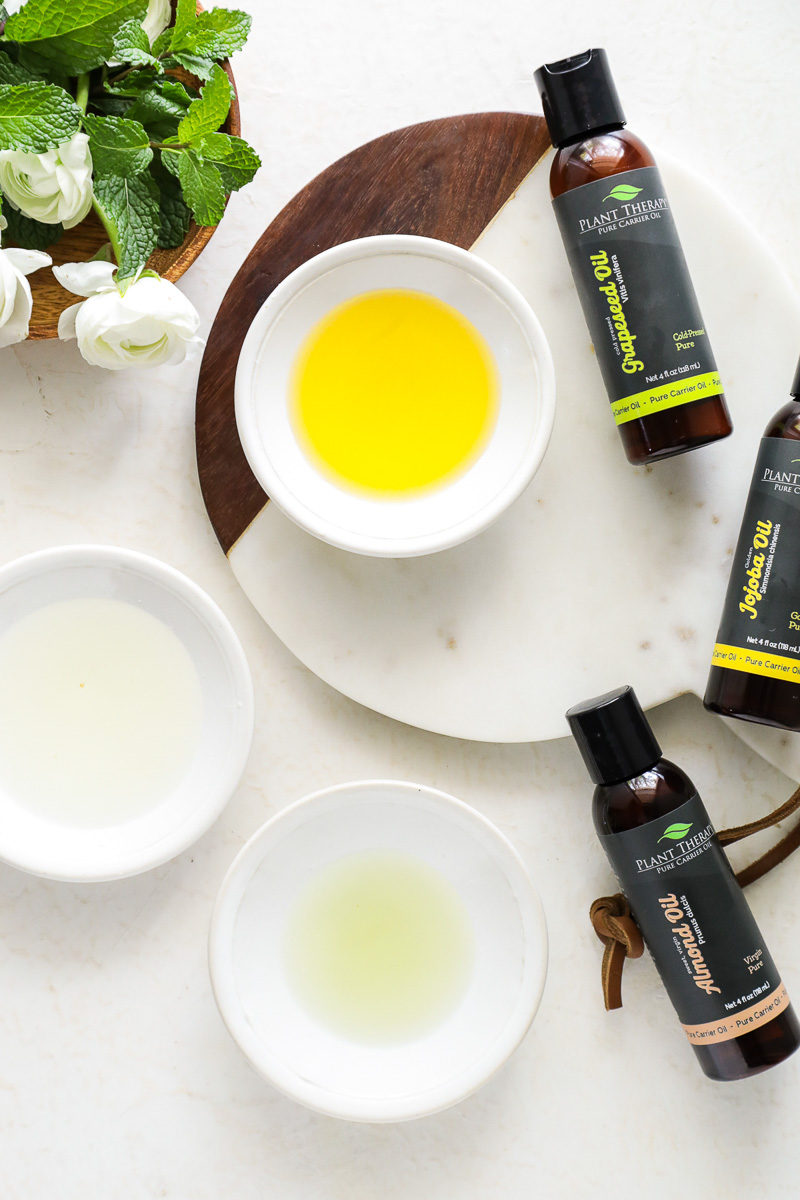
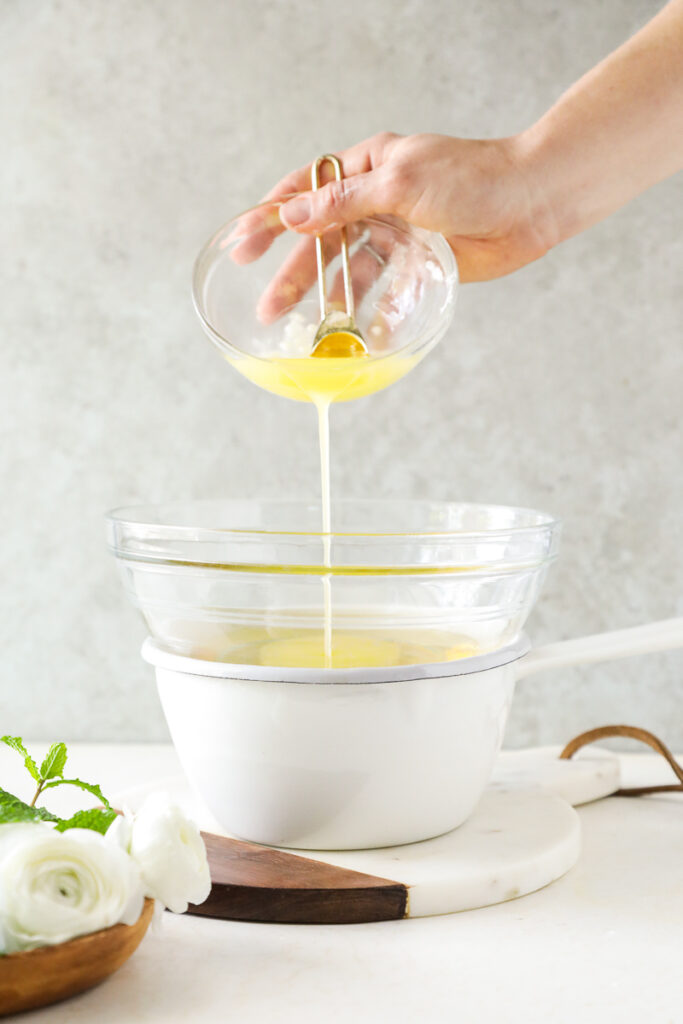
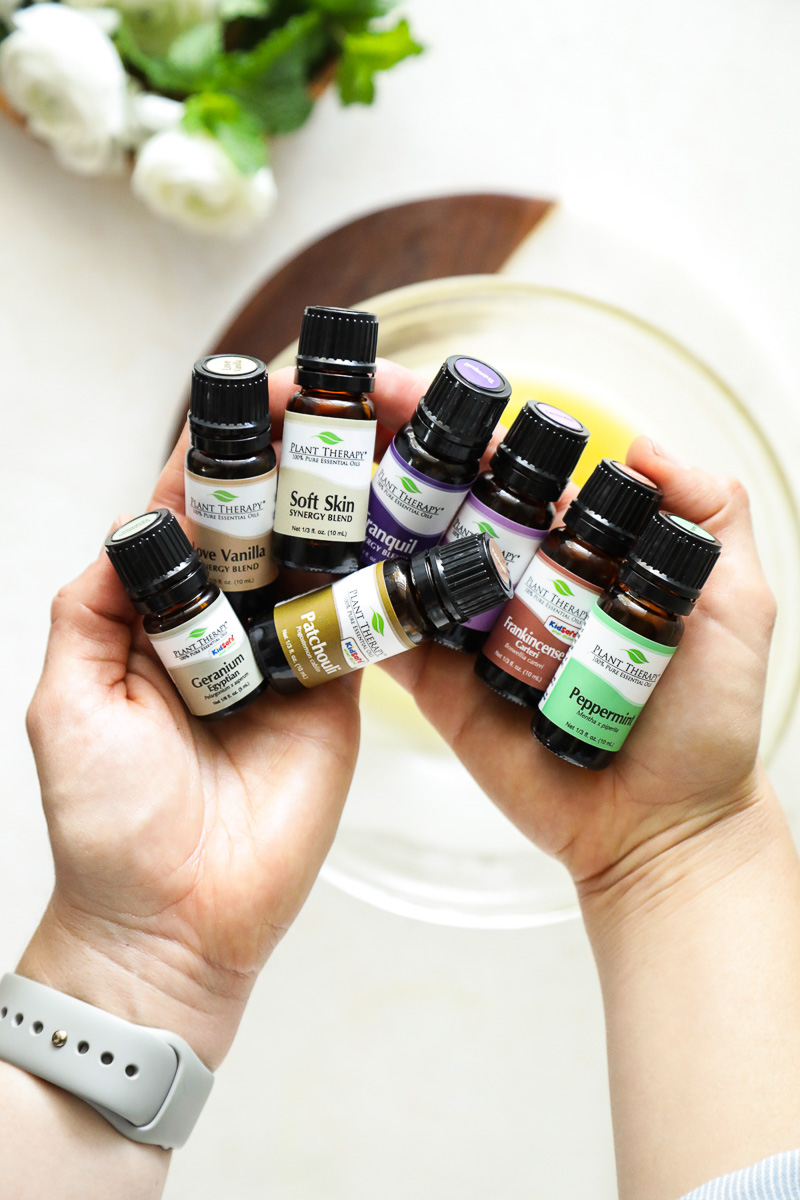
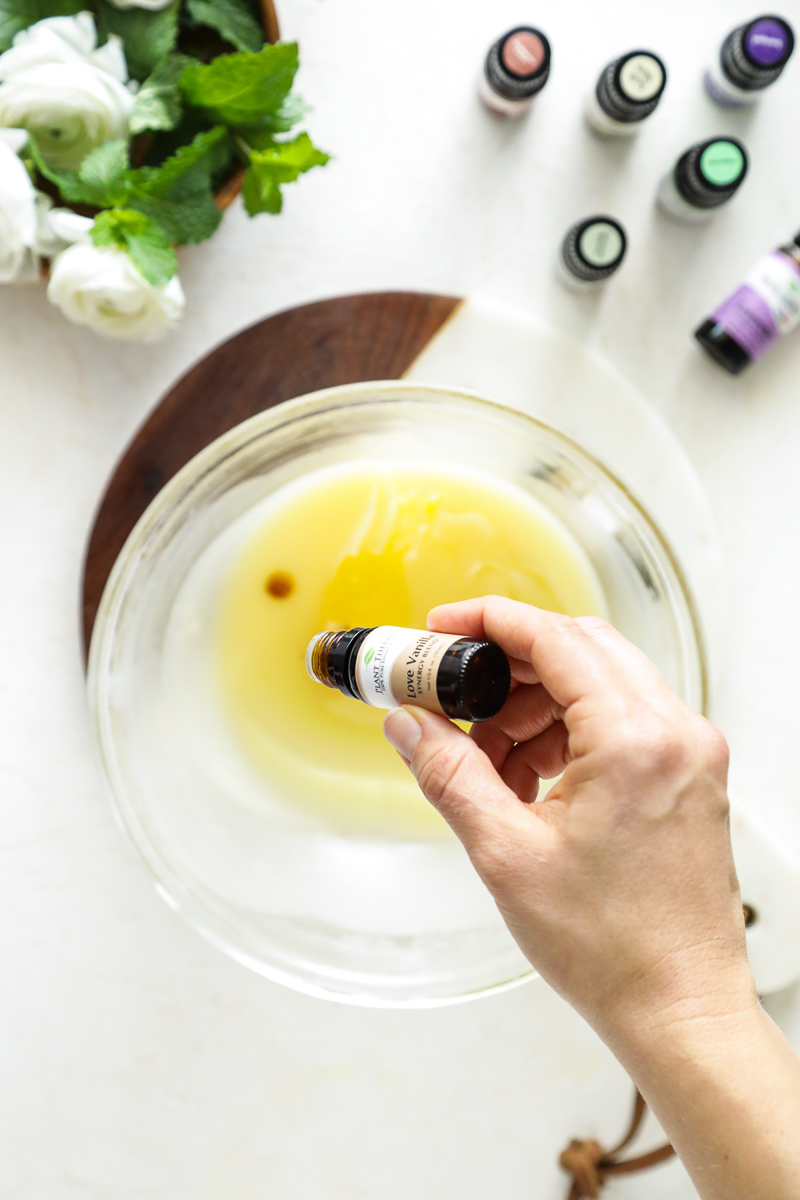
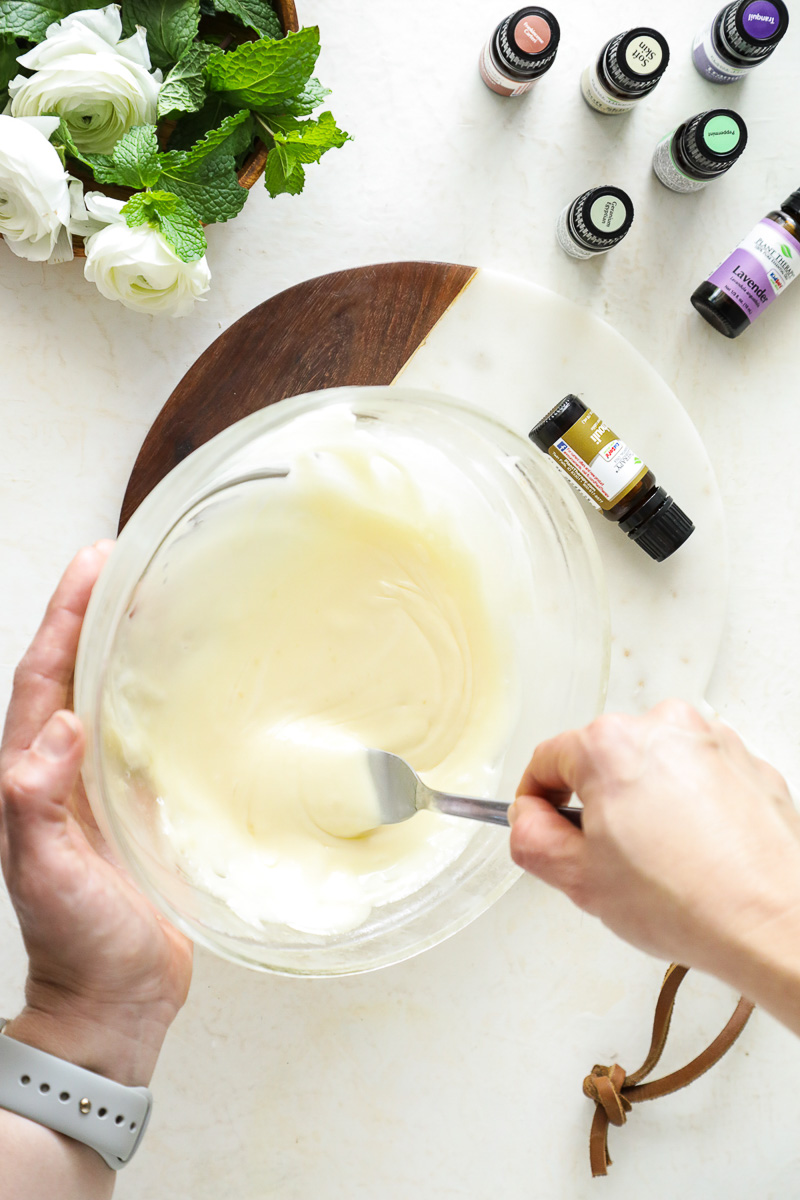
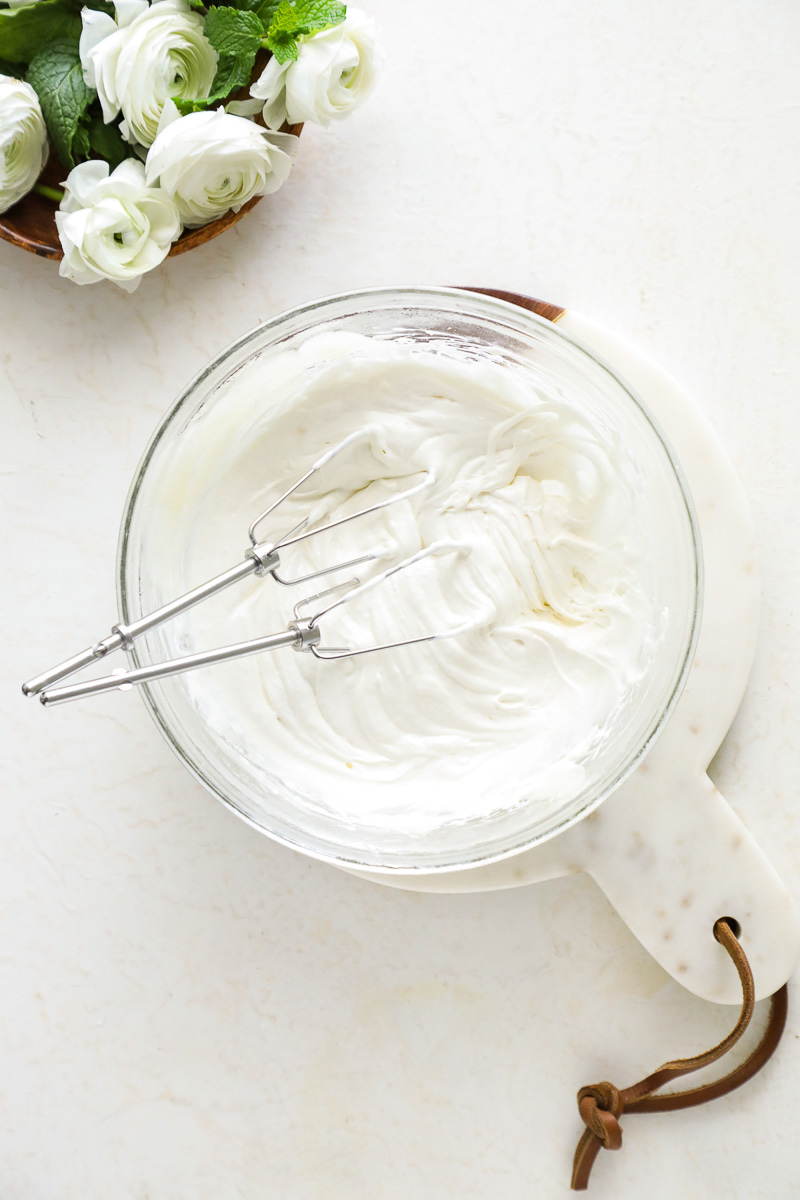

Storage: How Long Will It Last?
Store at room temperature (out of direct sunlight) in a sealed jar for up to 6 months.
What to Avoid Doing
- Don’t Use Hot Essential Oils – Some essential oils can irritate the skin and cause the skin to have a burning sensation. Avoid these “hot oils” such as cinnamon, clove, oregano, thyme, and lemongrass.
- Citrus Oils – Citrus oils, like sweet orange or lemon essential oil, are photosensitive and can make your skin more sensitive to the sun.
- Use Only a Little – If the body butter feels too oily, you’re most likely using too much. Body butter is much denser and richer than lotion (cut with water), so you don’t need much to moisturize the skin. Use a small amount, and it will absorb into the skin beautifully.
How to Prevent Hard Body Butter
If you want to create a soft, fluffier body butter, here are a few tips.
- Don’t Overwhip – When “whipping” the cooled ingredients, you only need a quick whip to create the body butter. Use a fork and whisk for 10-20 seconds for cocoa butter. For shea butter and mango butter, about 30 seconds with a hand mixer is plenty of time.
- Texture Depends on Ingredients & Temperatures – The outside temperature will affect the texture of the texture and softness of the final product. Cocoa butter will create a denser body butter. Shea butter and mango butter will create a softer final product.
- The Fluffiest Combo – Coconut oil and shea butter usually produce the fluffiest body butter.
How to Use This Product In Your Skincare Routine
Use this product anytime your skin needs moisturizing.
- Use a Small Amount – Scoop a small amount from the jar, then massage onto the skin. As you rub, the butter will melt into your skin. You only need a small amount at a time.
- Use When Skin is Damp – The best time to use this body butter is after showering when the skin is damp. Apply a small amount of product to your fingertips, then massage on the skin: arms, legs, feet, neck, and chest.
- Facial Moisturizer – This product may also be used as a moisturizer on your face. Avoid using coconut or olive oil in your formula if you plan to use it on your face. Or check out my homemade shea butter facial cream recipe.
How to Soften Body Butter Before Use: The body butter will soften or harden depending on the temperature in your home. To soften a hard body butter (which is normal and happens), place the butter in the bathroom while showering (not in direct contact with water). The hot steam of the shower will soften the body butter and make it easier to scoop out and spread on your skin.
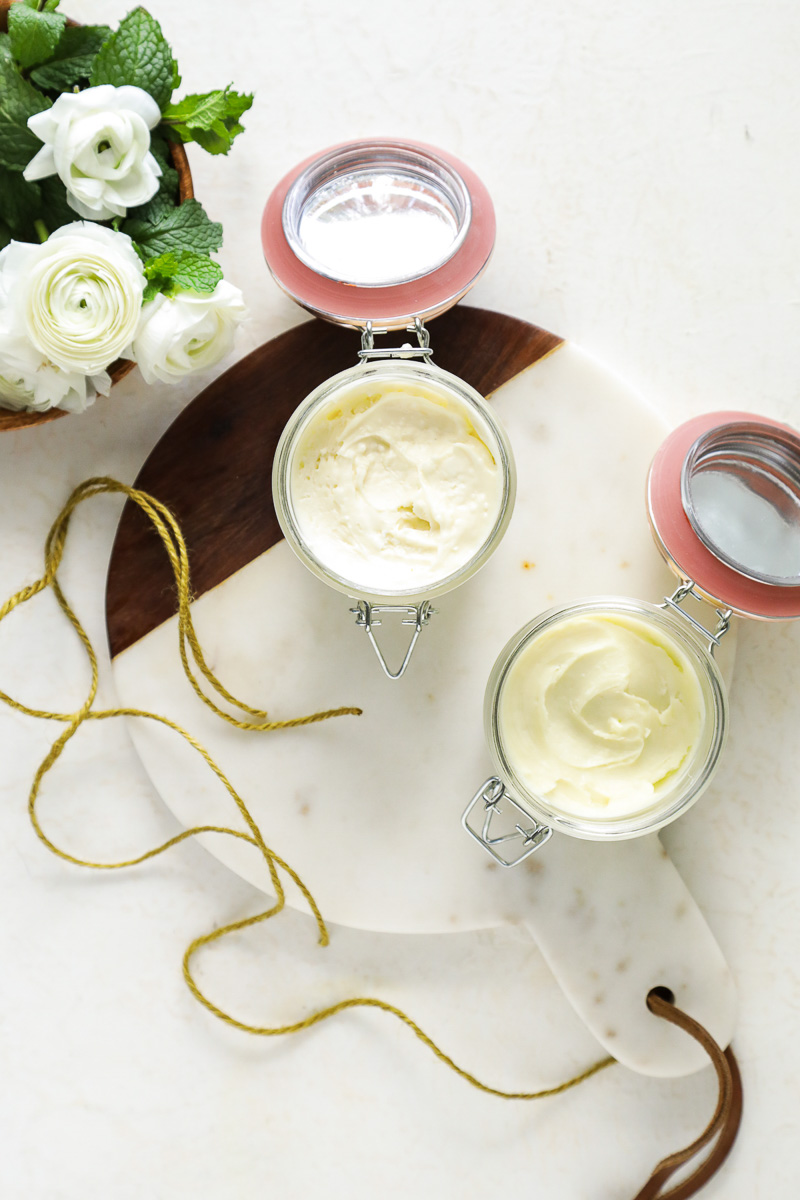
FAQs
- Do I need to use a preservative? Since water is not used to make this product, you don’t need to worry about mold or bacterial growth. Do not incorporate water into the product when scooping the butter from the jar with your hands (i.e., after a shower, washing your hands, etc.)
- You say $4-6 per jar. What size jar are you referring to? This recipe makes one 6-ounce jar. The cost will depend on the ingredients purchased.
- Can I multiply the recipe without affecting the final product? Yes, you can! You can easily double, triple, or quadruple the recipe to make multiple jars.
- Would vitamin E oil work as the carrier oil? No, vitamin E isn’t a carrier oil. You’re welcome to add a small amount of vitamin E oil if desired, but you’ll still need carrier oil.
- How long do you mix the product to avoid “over-whipping”? The answer depends on the ingredients used. For cocoa powder, just a few seconds. About 30 seconds should be enough time for shea butter and mango butter.
4 More DIY Recipes With Shea Butter
- Shea Butter Lip Balm – Use shea butter, beeswax, and oil to make a nourishing balm for chapped lips.
- Custom Lip Balm – Use any body butter of choice or oil to make this natural lip balm recipe.
- Lotion Bars – Moisturizing lotion in a solid bar, made with shea butter and beeswax.
- Face Moisturizer – Combine shea butter and oil to make an all-natural face moisturizer.
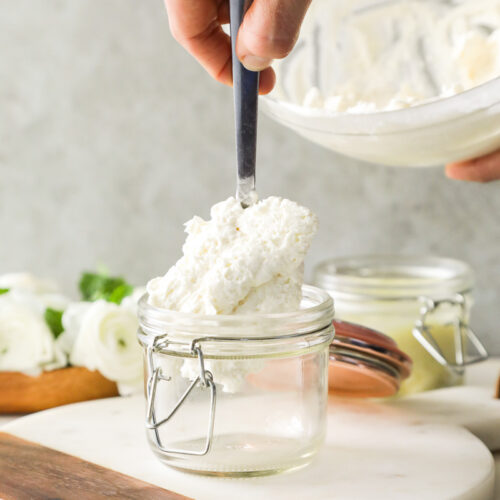
How to Make Homemade Body Butter (Non-Greasy)
Equipment
- 1 small-medium saucepan to create a double boiler and melt the butter(s)
- 1 medium glass or metal bowl big enough to rest on top of the saucepan to create a double boiler and melt the butter(s)
- 1 small bowl if using arrowroot starch to mix with the carrier oil
- 1 fork or hand-mixer to whip the body butter
- 1 glass storage jar to store the final product
Ingredients
- 1/4 cup shea butter unrefined or refined (41 grams)
- 1/4 cup mango butter or cocoa butter (41 grams mango butter or 34 grams cocoa butter or use 41 grams additional shea butter if using all shea butter)
- 1/4 cup carrier oil of choice: grapeseed oil, jojoba oil, sweet almond oil, or coconut oil (42 grams)
- 1 1/2 teaspoons arrowroot flour starch optional (5 grams)
- 36 drops essential oil of choice optional
Instructions
- First, make a double boiler: Partially fill a saucepan with water (about 1/4 the way full). Then place a glass (or metal) bowl on top of the saucepan. Place the butter(s) in the glass bowl. Turn the stove-top to medium heat, placing the double boiler on top of the heat. Allow the butter(s) to fully melt (about 3-5 minutes).
- If you're planning to use arrowroot starch/flour, in a small bowl, whisk the starch into the carrier oil of choice. Set the mixture aside. If you're not using arrowroot flour, skip this step.
- Carefully remove the glass bowl (and melted butters) from the heat source. Add the oil (with the arrowroot flour mixed in, if using), and stir to combine the ingredients.
- At this point, the mixture should be cooler (along with the bowl). If not, allow it to rest for a few minutes. Then place the bowl in the fridge and allow the mixture to solidify (about 30-60 minutes, depending on location in the fridge and fridge temperature).
- Once the mixture is opaque and a bit firm (not solid as a rock), remove the bowl from the fridge. Add the essential oil of choice, if desired.
- If you used cocoa butter, whisk the mixture with a fork until it appears "whipped." If you used shea and/or mango butters, you can use the same technique with a fork, or use a hand-mixer to "whip" the mixture. Don't over-whip!
- Spoon the whipped body butter into a glass storage jar with a lid. Place the lid on the jar. It's now ready to use. Store at room temperature (out of sunlight) for up to 6 months.
How to Use:
- Use this product anytime your skin needs moisturizing. Scoop a small amount from the jar, then massage onto the skin. As you massage, the butter will melt into your skin. You only need a small amount at a time.
- I love to use this product after bathing when my skin is still moist. I apply a small amount of product to my fingertips, then massage on my skin: arms, legs, feet, neck, chest.
Video
Notes
Natural Body-Care Simplified
Learn how to make your own body and beauty products with simple ingredients.

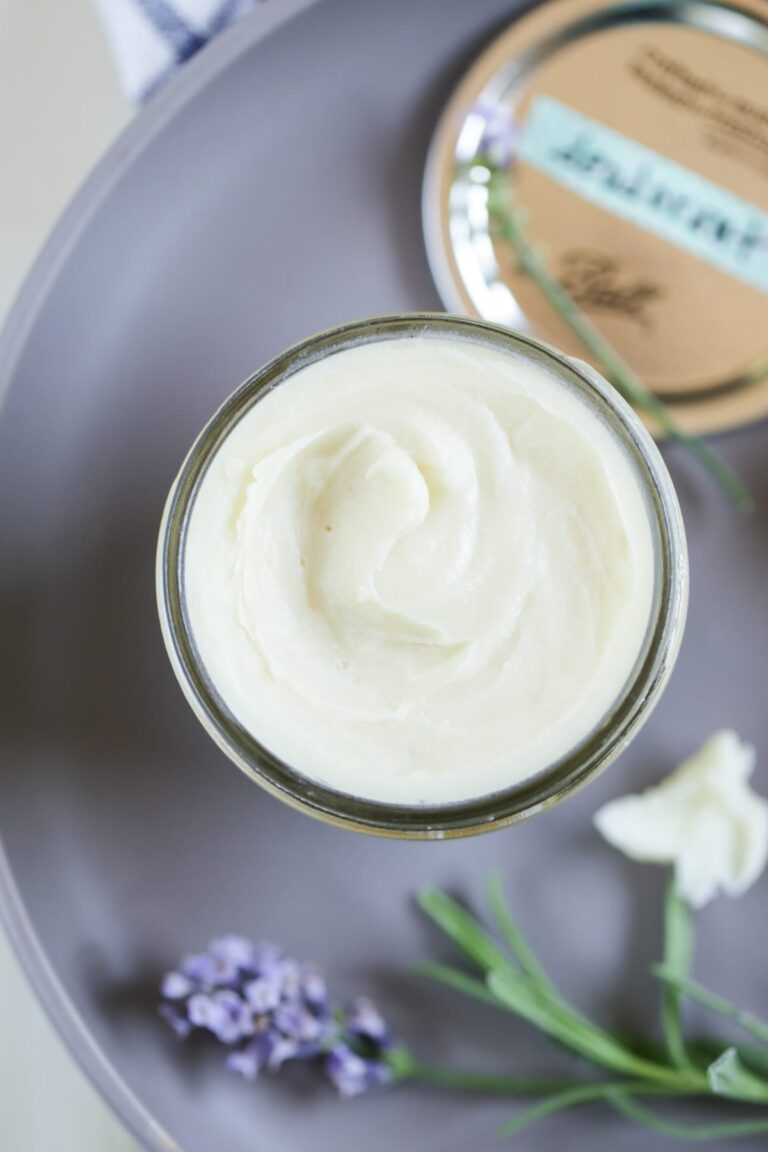
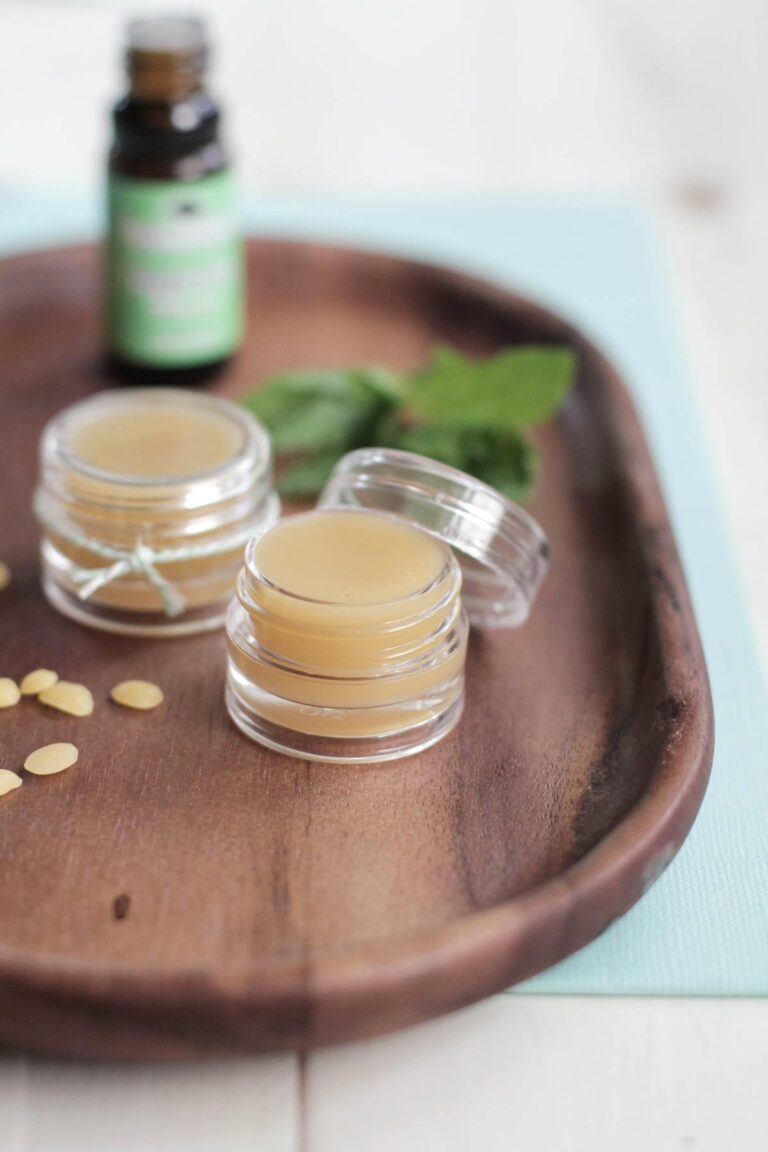
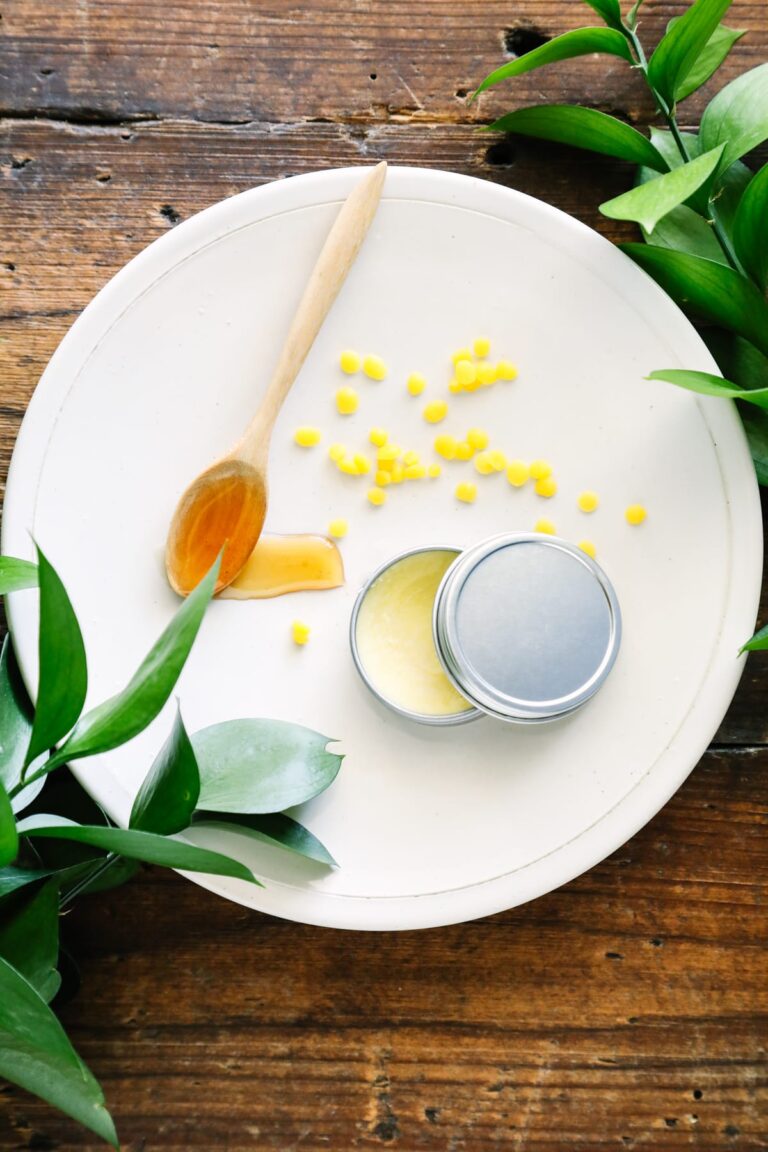
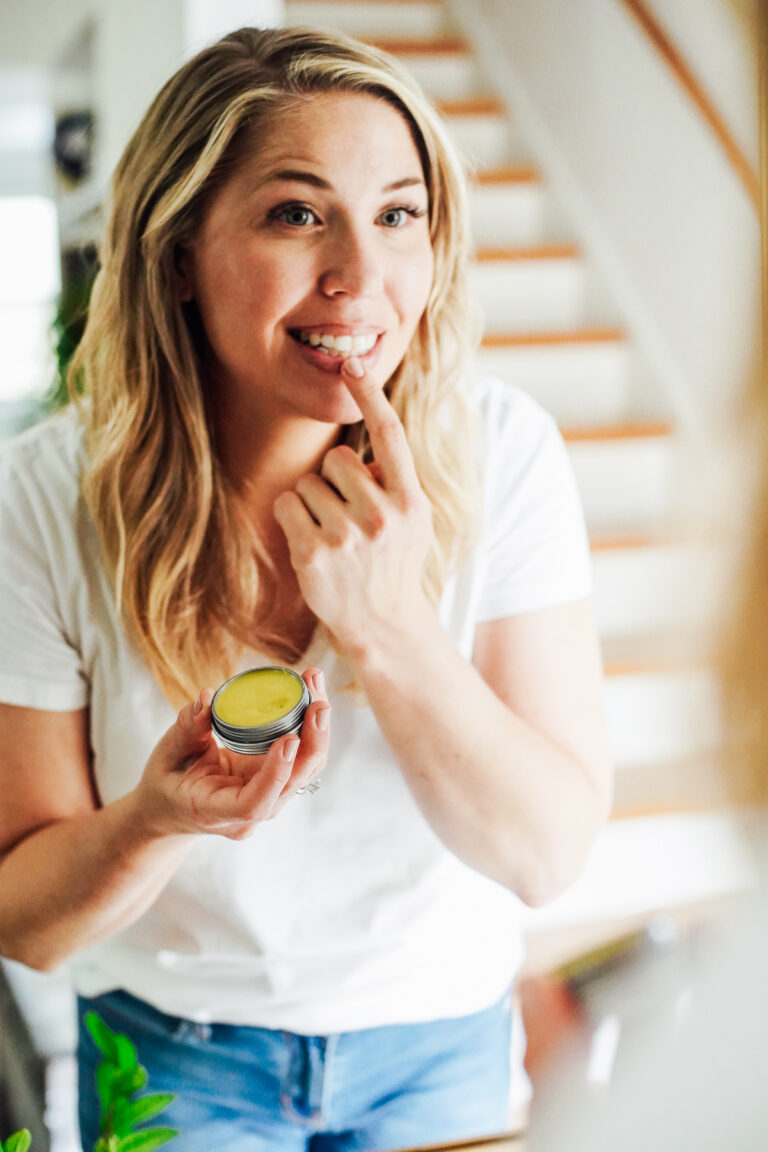
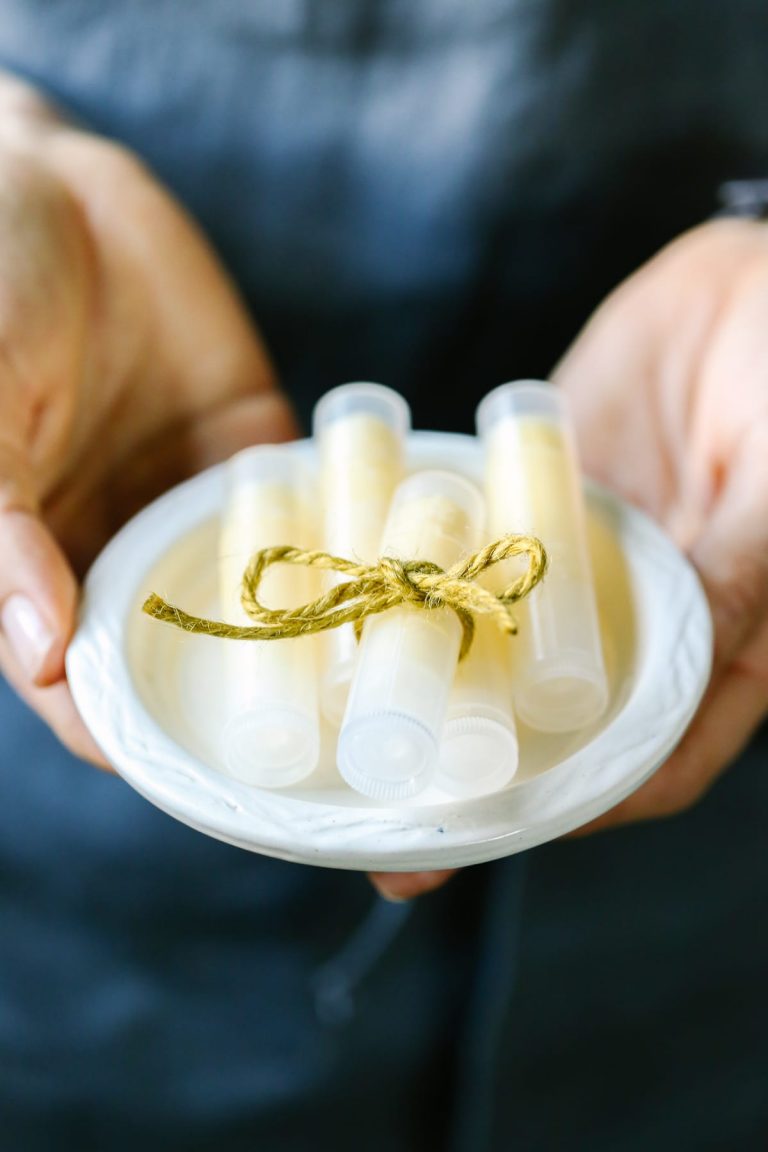
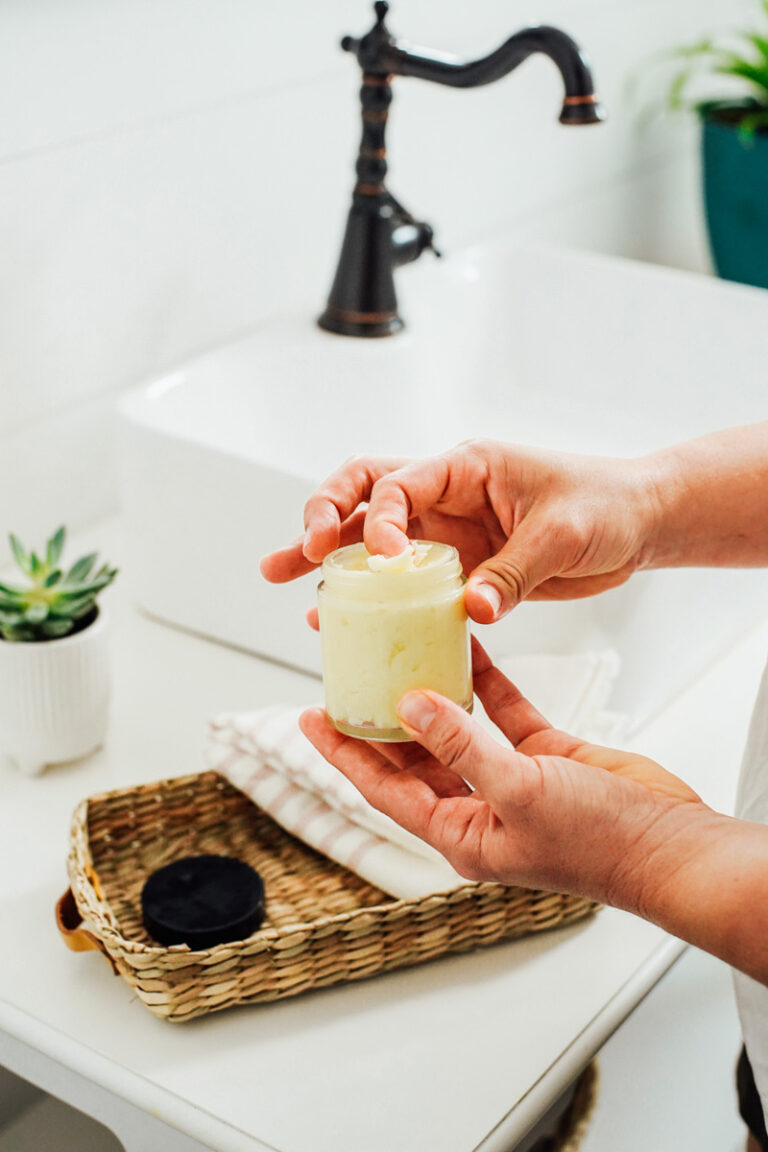
Do I use the hard cocoa butter or the creme cocoa butter?
Hey Irene, Hard cocoa butter.
Hi,
Thanks for the step by step approach. I’m definitely giving it a go.
May I know what one can do to prevent the butter from melting at room temperature or the oils separating please?
Jon.
Hey Jon, It won’t melt at room temperature and the oils won’t separate.
Hi! Great guide! If I want add some vit e when I should it?
Thank you, Karo. Add it at the end before whipping.
This is such a great recipe!
The man reason I searched for a homemade body butter recipe is because for christmas, I made for my friends homemade balm out of different oils, and there are some leftover cocoa, shea butter, almond oil and essential oil. Also I run out of my nourishing cream. I haven’t thought that I would be able to find a recipe including just those ingredients that I have at home, but now I am so happy I can use my oils, this way I don’t have to buy myself body butter. 🙂 Huge thanks!
ive been trying different recipes and came across this one which i am about to try but i had a question. i just purchased lavender butter. Can i use that instead of the mango butter?
Hi Christine, mango butter is what is preferred for this recipe.
LS Team.
Great recipe! This was my first attempt at homemade body butter and your page was really helpful and informative 🙂
I used shea and cocoa butter with almond oil and am very happy with the results, but regret the decision to skip the arrowroot because it’s a bit greasier than I anticipated. I’m wondering if I can melt the batch back down and add the arrowroot, then let it cool and set again without ruining it?
Hi Mary K,
I haven’t tried it but you can try, I don’t see why it wouldn’t work but just try and not heat it too much.
LS Team.
I have the same question
I have been making this for some time, and I absolutely love it! This have saved my skin this winter! I actually have it on my feet now with socks on, and I use it like a lotion all over my body.
This recipe is so simple, customizable, and in the past I liked that I didn’t need a hand mixer to whip it because I did not have one at the time (although I see now why people whip it!) Anyways, I recently made some, but did not whip it, and it is difficult to get out of the container (because it is winter here), so I will whip it next time. But it is still dreamy, and heaven for my skin!
Thats wonderful, Faith! So happy you loved it.
LS Team.
That’s wonderful, Faith! So happy it works well for you.
LS Team.
Hi Kristin,
I want to try making my 1st batch of body butter this weekend. I got all the ingredients, but I have a couple questions –
1. How much body butter does it yeild?
2. Since the butter is hard in its jar, it’s not easy to measure 1/4 cup as is. I’m wondering if I should melt the butter in its container, and scoop out the amount specified on the recipe? Would the unused butter degrade in quality as it’s heated and reheated?
Thanks in advance!
Hi Wendy,
This recipe yields 6oz.
I wouldn’t recommend melting in the container. I haven’t tried it, if you use a spoon that can help with measuring.
I hope this helps. If you have anymore questions, please ask!
LS Team.
Hi Kristin,
How much arrowroot starch you suggest for this recipe?
Thanks
Hi Ale,
The recipe calls for 1 1/2 tsp of arrowroot flour starch.
LS Team.
Hi kristin! What should I add to this recipe to make it “pumpable”? I have a few empty pump bottles in my house and I was hoping I could use them for this body butter.
Hey Chloei, By nature, body butter is thick, not pumpable. Lotion is pumpable as water is added. This recipe won’t work for pump bottles.
Hi Kristin, I love your recipe, I am going to try it soon.. However, I do not have arrowroot powder, can I substitute it with rice powder? Also, can I use almond oil and carrot oil blend in my body butter? I am using Shea butter only, can an electric blender be used instead of hand mixer,, I do not have that too. Thanks
Hi Aurora!
The best alternative would be cornstarch. Yes, those oils will work and yes you can use an electric blender!
Thanks for commenting and rating!
LS Team.
Hi luv! thanks for sharing this! Question: How do you know what a 1% dillution would be for the amount working with for addition of essential oil?
Hi Ioanna, you base it on your carrier oil, here is a chart you can use: https://www.nowfoods.com/now/nowledge/diluting-essential-oils
thank you for giving me wonderful information
You’re welcome, it means a lot!
Please could you email your lip balms recipe please.
Kind Regards Terry
Hey Terry, If you search: Live Simply lip balm in Google there are a few options that will pop up. Here’s a basic tutorial: https://livesimply.me/how-to-make-a-simple-ingredient-lip-balm/
Looking forward to making my first batch this week.are there any caveats for making larger batches… doubling or quadrupling the recipe? Also any tips for packing into small glass jars? Special tools or techniques? Thank you so much for sharing the recipe.
Hey Liz, You’ll just need a big enough double boiler. For packing in small jars, a spoon is probably best. Not sure if there’s a special way to do that.
Hi Kristin! Thank you so much for the recipe! I was wondering if you have any advice for the cooling/whipping phase? I used shea butter + almond oil for my recipe and whipped when it reached a soft (but not yet completely hard) texture in the fridge but I can’t seem to get it into a “butter” consistency. It’s mixing into a thick shampoo texture (so it’s runnier than it should be). Any advice on how to thicken this up?
Hey Lisa, Hmmm, I’m not sure why that’s happening. Maybe try refrigerating it for a bit and then whipping.
You’re right – it needed more fridge time! I put it back in for several hours (it was a LARGE batch) and it whipped up perfectly this morning. Thank you again so much – I love this recipe!
Awesome, Lisa! So glad that worked.
Thanks Kristin, I thought there had to be a reason to add them in the end. Anyway, I love your recipes and had the same issue with coconut oil not suiting me anymore. Great tips for everything. You’ve become sort of my guru!. Cheers from the UK!.
Thanks so much, Ana!
Hi Anna,
what are the oils you have used? Did you used a combination of EO? I’m always looking for new scents. Wish you a nice day 🙂
Hi Kristin, I’ve actually been making my own butter following your recipe for about a year now, each time I mix a different essential oil, and I always add the arrowroot, but last night I fell asleep and left the thing in the fridge. The problem is that I had already mixed in both essential oils, (it hadn’t really reached a good solid state, but it had been already on the fridge -toddler acting out, not enough concentration.) so now I have this super solid thing. But my question is, since you say to only add the essential oils once the mix has been solidified a little and my guess the important part is cooled down, can I still try to melt it a little on a double broiler? thanks in advance!!
Hey Ana, I would just put the mixture out at room temperature. It may take a couple of hours but it should soften up so you can whip it. The essential oils are added last since hot liquid will cause the essential oils to evaporate. You could reheat it, but it will probably cause the essential oils to evaporate.
Awesome recipe and a total demystification of the body butter! I combine my butters with drier oils to take the greasy edge off and find it is perfect.
Hi Kristin, thank you for sharing an amazing insight of formulating the body butter. My question is, I have a slight different ingredients how can I determine exact amount of each required in my body butter? also, can we add sweet almond and olive oil together?
Many Thanks 🙂
Hey Iman, As long as you stick to butters and oils, I would use the grams provided to create your own blend. Yes, you can blend sweet almond and olive oil together, just cut the grams between the two.